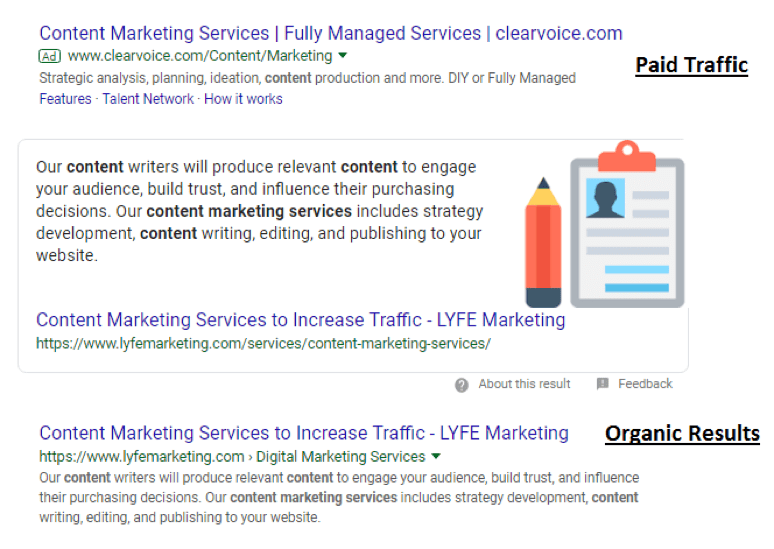As of right now, there are more than 4 billion people online, according to Internet live stats. Out of this, around 3.2 billion are social media users – equating to about 42% of the entire world’s population.
These stats are proof of the massive number of potential visitors and leads that your business can attract, with the right strategies in place
For example, you can either pay for traffic (PPC), or dedicate resources for pulling in visitors organically (SEO). While both fulfil the same goal, the means of achieving these results vary significantly.
Before opting for either one, there are many things to consider; can your business afford a large, one-time investment for traffic generation? Is it wiser to pay a recurring price for guaranteed results?
To help you with this decision, we have compiled everything you need to know about organic vs paid traffic.
But before we delve into the benefits of each strategy and their differences, it’s important to understand what exactly these terms refer to.
What Is Organic Traffic?
Contents
According to Clearwater, Organic traffic represents visitors that come to your website via search engines. They punch in their queries, click on organic listings that appear in the SERPs, and make their own choices about which website to visit.
There is absolutely zero external influence.
However, your website can be optimized to rank better on search engines – and therefore, attract increased traffic.
To do so, work on providing a secure and accessible website with good page speed, and advanced mobile UX.
Why Choose Organic Traffic?
Organic traffic generation relies on building a relationship between the business and the user. It stands true to the term assigned to it, empowering users to pick out sites that they believe suit their needs the best.
While it may not seem enough to just optimize your site and hope for the best, it actually works brilliantly.
Consider this: Hubspot reports that organic searches now equal 94% of all web traffic. Because of this, 61% of marketers now say that improving their SEO, and working on building an organic presence, is their top marketing priority.
What Is Paid Traffic?
On the other hand, paid traffic (also referred to as Pay Per Click – PPC) takes a very different approach.
Paid traffic is generated when users click on the advertisements placed above the organic results on the SERPs.
These ads are selected and displayed through a bidding process by Google Ads. The search engine sets the prices for all keywords, and companies bid on them.
Google then evaluates the maximum bid, analyzes the relevance of the proposed ads, and assigns a Quality Score that determines your Ad Rank.
The higher your Ad Rank, the more often your ads appear on the SERPs.
Benefits Of Paid Traffic
This strategy is perfect for any business that wants to take the faster route to generating traffic, rather than slowly building a presence online.
Despite having a poor image initially, only 1% of consumers now hold negative connotations to PPC. As a result, traffic funneled through PPC brings up 50% more lead conversions than organic methods.
In fact, paid search ads also increase brand awareness by 80%.
On average, businesses now make $3 in revenue for every $1.6 spent on ads – earning almost double of the amount spent.
While SEO can be used to build a solid base for your online presence, there are millions of businesses doing the same work as you. Hence, there is no guarantee that you will ever rank high enough in SERPs.
On the other side, PPC is only good for as long as you can afford it. With more high-end brands opting for this technique, keyword bids have skyrocketed and are often too expensive for small businesses to afford.
The best strategy to apply in this scenario, is to find the right balance between the two and optimize it according to your business goals.



